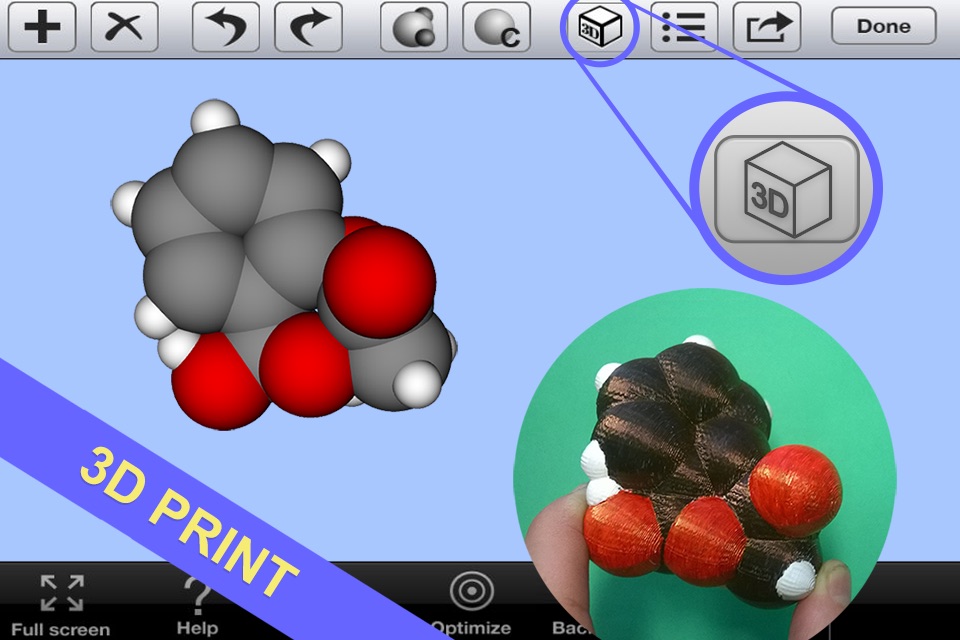
3D Molecules Edit & Test
“3D Molecules Edit & Test” allows one to build and manipulate 3D molecular models of organic and inorganic compounds. The key features of “3D Molecules Edit & Test” are 3D printing support and the "Test yourself" mode that allows learners to check their knowledge of the 3D structure of molecules. This is a valuable tool for chemistry students when learning about molecular bonding and orbitals with the aid of 3D visualisation. The app is great for any high school or college student in chemistry courses.
Are you looking for apps that allow students to construct molecules with 3D visualization?
“3D Molecules Edit & Test” is a very effective app for this purpose as it allows organic and inorganic molecular structures to be built with single, double and triple bonds, as well as cyclic compounds. The molecules can be visualised in 3D using stick, ball and stick and space-filling (CPK) models.
Important information about the molecule can be displayed. For example, it is possible to visualise the atomic orbitals, see electronic effects using arrows and identify bond lengths and element symbols.
3D printing offers a unique and straightforward approach to fabricate plastic 3D models of molecules and extended solids. "3D Molecules Edit & Test" has option to directly export the model as an STL file (most 3D printers recognize this format).
In building these molecules, guidance is initially needed to show how to use the software. There is a help button that provides clear and concise screen shots demonstrating how to use the app.
"3D Molecules Edit & Test" allows the users to open and view molecules in SDF or PDB format files, for example, from NCBIs PubChem (http://pubchem.ncbi.nlm.nih.gov), a public database of compounds or from RCSB Protein Data Bank (http://www.rcsb.org/pdb).
Once the molecules are built, they can be saved or emailed. This is another good feature for assessment as students can send molecules to the teacher and the image opens directly in the email.
FEATURES:
• Has option to directly export the model as an STL file (most 3D
printers recognize this format).
• Building molecule model of any organic or inorganic compound using most of periodic table elements.
• “Test yourself” mode to build the target chemical compounds.
• Support of single, double and triple bonds.
• Building molecule models of cyclic compounds.
• Hints which provide information about whats going wrong with the builded molecule.
• Visualization of Wireframe style, Stick style, Ball and Stick, Spacefill (CPK) models.
• Visualization of atomic orbitals and electron effects.
• T-shaped and «seesaw» molecular geometries support.
• Availability of information about the bond length and chemical element symbols in the molecule.
• Bond-angle optimization.
• Saving and sending the created model by e-mail.
• Loading, editing and saving molecule in SDF file format.
• Loading, editing and saving molecule in PDB file format.
• Creating, sending and opening molecule verification file.
• Export to VRML format for builded molecule.
• Opening the molecule file attachments directly from Mail.
• Opening and saving created molecules in cloud services and third-party applications.
The app includes tutorial how to create and delete models.



